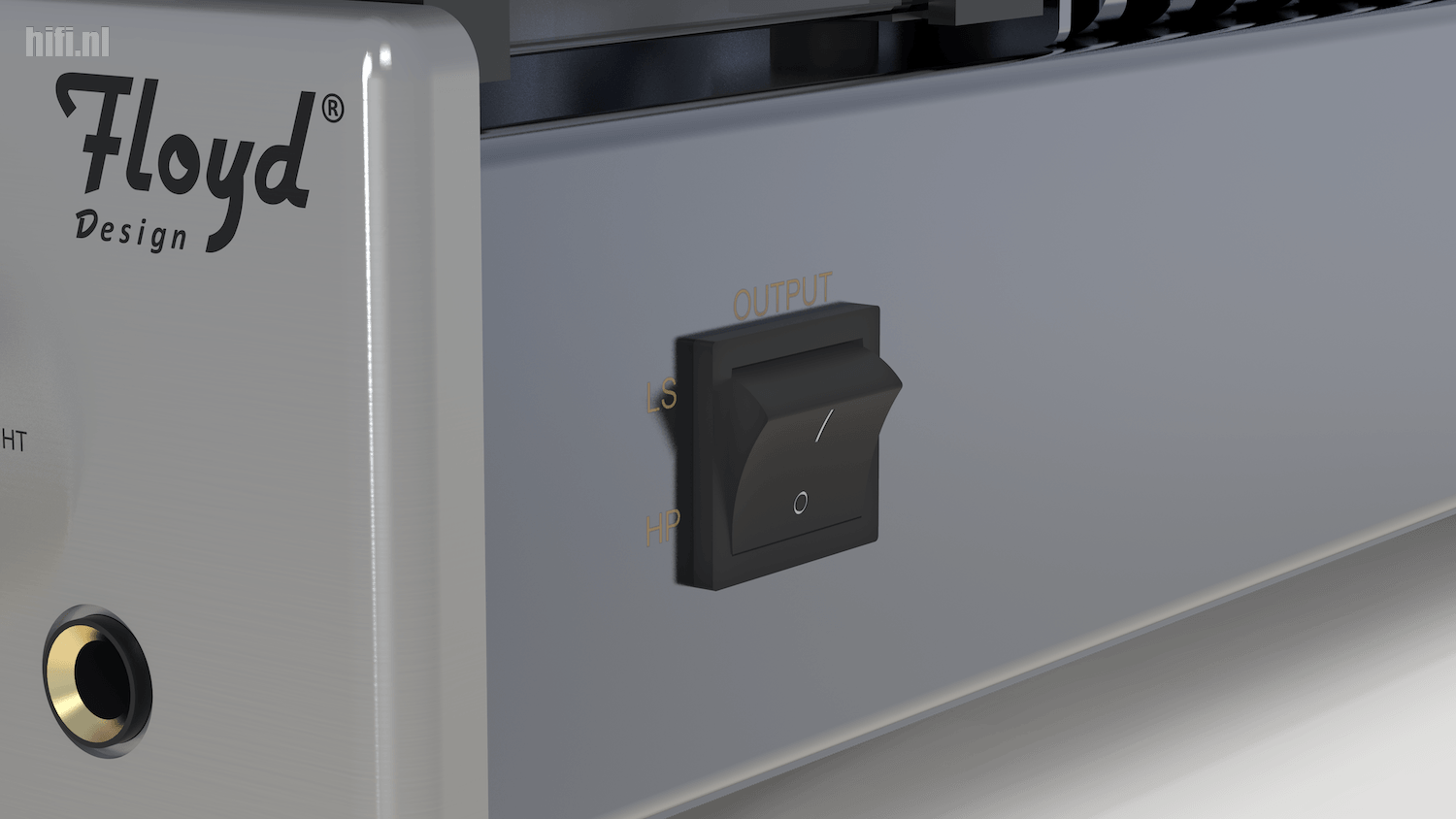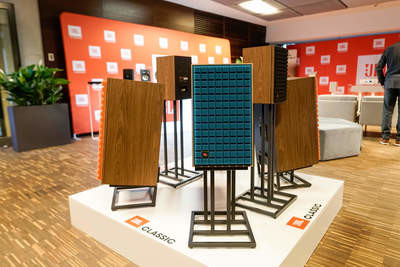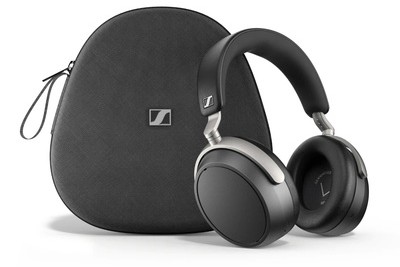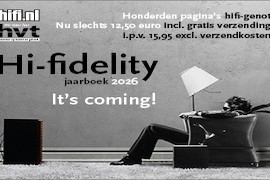
It is pretty unusual for two authors to write reviews about the same product for the same publisher. Independent from each other, without prior knowledge of each other's epistles. Yet this is the case (maybe just once) because this amplifier is quite different from the existing lines within the PrimaLuna brand. After all, PrimaLuna is known as a manufacturer of tube amplifiers, pre, power and integrated. With the arrival of the EVO 300 Hybrid, the designers switch to an integrated amplifier, where the preamplifier part seems to be a derivate of the EVO 300-1. The power amplifier deploys a MOSFET transistor circuit. PrimaLuna did not put just a tube in the signal path like many others but created a dedicated design true to its philosophy, combined with a MOSFET transistor power amplifier. | Voor Nederlands, klik hier
This is not the only reason for a double review. In our opinion, a brand with entirely Dutch roots, designed by Dutch guys, over the years been turned into a world-famous brand in high-end amplification, deserves to be in the spotlights. While colleague Max Delissen discusses in-depth music and perception, this review focuses mainly on the technology used in the EVO 300 Hybrid.
PrimaLuna: proud of Dutch design
PrimaLuna originated from the brain of Herman van de Dungen of Durob Audio, who sought cooperation with Kevin Deal of Upscale Audio in the USA for the brand. They assemble PrimaLuna in China. No, don't leave now. Please keep on reading, under Dutch supervision and according to the standards set for the Netherlands and the USA. PrimaLuna is a lot more Dutch than Chinese or American, just how it has been from scratch.

The design of the tube circuits originated from Marcel Croese (ex Goldmund). Jan de Groot designed the MOSFET transistor part. He was responsible for all Sphinx Audio designs in the period between 1995 and 2000.
At the moment, Jan is busy working on Floyd Design high-end amplifiers for Durob Audio. Floyd Design quality will be comparable to Pass Labs, D'Agostino and other famous gear. Herman, Marcel and Jan all have Dutch nationality and live in the Netherlands. Over the years, the team slightly fine-tuned Marcel Croese's tube section. The 12AU7 has replaced the 12AX7 preamp tube, and the group decided to double the number of 12AU7 driver tubes. High-quality components, custom-made capacitors in the signal path and the heaviest transformers are used, besides their over and over optimised adaptive bias control and tube protection.

The PrimaLuna amplifiers have been upgraded over the years in terms of sound quality and technical characteristics. The fact that the brand has been highly reliable and excellent in sound quality is proven by me, the author, using a PrimaLuna ProLogue Four EL34 from the first generation with great pleasure every once in a while. Quality control has never changed from ProLogue to DiaLogue to Classic, Premium or EVO.
Technology highlights
As promised, we will go deeper into the technique, and I asked Jan de Groot about his design. Jan's passion is not the electron tube but designing circuits with the discrete equivalent: the Field Effect Transistor. There are various types of FETs available, some with unique audio properties when used correctly. As in the upcoming Floyd Design amplifiers, in the EVO 300 Hybrid, a JFET is chosen based on the transistor part's input. In a balanced and complementary arrangement consisting of N-channel JFETs and P-channel JFETs.
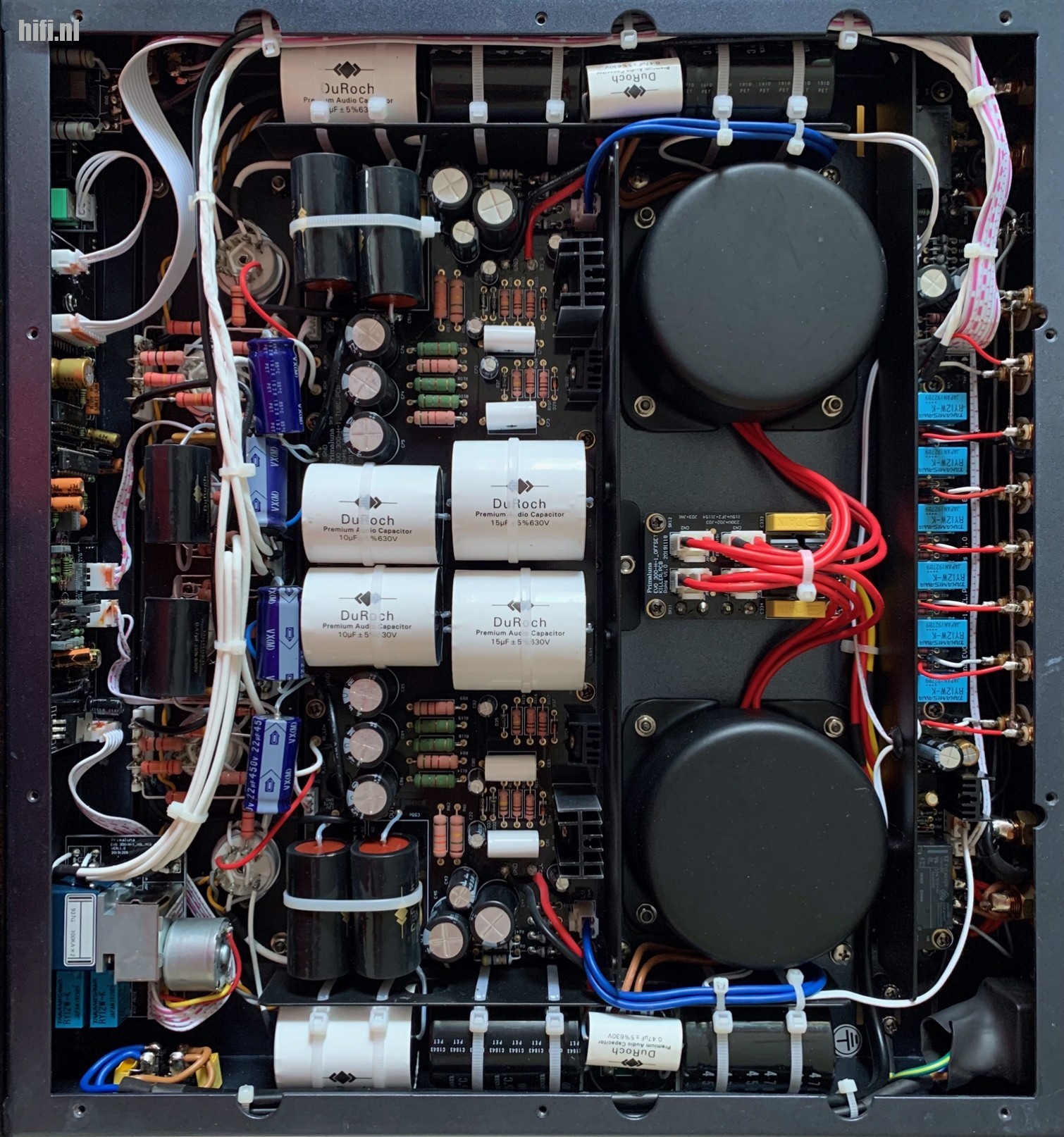
All JFETs operate in cascade, i.e. the output couples directly to the next transistor for improved behaviour. The signal is then prepared to be amplified both in current and in voltage. Each channel uses two complementary MOSFETs incorporated in the circuit so that neither the low nor high impedance of a loudspeaker influences the amplifier's behaviour. Relays at the loudspeaker output only connect after the tube circuit is stabilised. Due to chosen cooling capacity and the amount of space available in the EVO 300 Hybrid, the output power has been kept to a conservative 2 x 100 Watt at 8 Ohm, reaching 2 x 160 Watt at 4 Ohm. Enough power for 99% of the speakers used in rooms such as livings and man caves.
The dual-mono power amplifier sections have their dedicated power supply with a 500VA transformer in front. Linear Systems is the JFETs supplier, and the MOSFETs are by Exicon. Both companies belong to the cream of the crop in the field of FET audio components. When you take a peek through the cooling slots in the top cap, you will notice a beautiful red glow in the dark. Red LEDs do an excellent job as low-noise power sources for all circuits. Optically, this matches the soft glow of the electron tubes. The PCB layout of both channels is the same. The PCB is of high quality, 2.4 mm thick instead of the usual 1.6 mm and uses 105µm copper tracks (usually 35µm). The tracks are additionally gold plated. In the EVO 300 Hybrid, both channels have their individual protection circuit connected to the control processor. The design and the optimised coupling of the MOSFET amp part with the tube section took two years for Jan de Groot and Chinese technicians.

With the transistor section on top of the EVO 300 Hybrid and the heat sinks on the sides, the lower compartment is entirely available for the tube section. The tube preamp section is typically PrimaLuna, obviously tuned to the transistor output stage. Two 12AU7 tubes make up the preamp section. Four 12AU7 tubes are output stage drivers. The purpose of doubling the driver tubes compared to earlier designs is to lower the impedance at the output of the tube stage. It is well-known technology: doubling the amount of available current at the output provides an audible benefit. Those who remove the bottom plate will find a motorised ALPS Blue volume control and relay-controlled inputs. A PrimaLuna AC Offset Killer ensures that even from a direct current contaminated mains supply, the power transformers never hum.
Many of the resistors used are supplied by Japanese Takman, especially those in the signal path. Handmade metal film and carbon resistors, low-noise type, designed for audio and therefore more expensive than resistors you find in many other tube amplifiers. Often DIY builders upgrade their tube amps with Takman. Takman resistors are known for their low distortion, are non-magnetic, have brass caps on the ends, and use OFC copper wires. The tolerance is 2%. Capacitors in the signal path are either polypropylene made to specification in China or tin foil made in Europe.
Tinfoil caps cannot be made in China since PrimaLuna uses a tinfoil quality usually only found in products like AudioNote and consorts. The polypropylene types are equal to those coming straight from the best factories in the US. The capacitor winding speed is deliberately set to 50%. Although winding takes more time, it is also more precise and within narrow tolerances. For tinfoil, the half-speed winding is a necessity anyway. Otherwise, the material flings off the winding machine.
The brand name DuRoch is PrimaLuna's brand, and you will not find it anywhere else. Wiring is sourced from Switzerland because no supplier is willing to produce this higher conductor purity and pure insulation material in China in small quantity. This PrimaLuna is hard-wired wherever possible. No tube sockets on PCBs that break off after a few tube changes. Everything is built for lifetime reliability and minimal failure. The tube freak probably wants to know that PrimaLuna selects the tubes from batches delivered by Psvane. Tube rolling is best done with the two amplifier tubes. The drivers have a much smaller influence on the sound of the EVO 300 Hybrid. Tube rolling is undoubtedly not a 'must do' with the PrimaLuna branded tubes in place, but it is part of the fun for many.

Inputs and outputs are sufficient for most users—Aux 1 to 5 at line level. A Home Theatre input is configured. A phono board is an option that will take away one of the Aux inputs and must be placed in the separate, fully shielded case at the bottom. Apart from the speaker terminals at the back and the headphone output at the front, there is a Tape Out and a Subwoofer Out. A little mono/stereo switch on the back switches between a single subwoofer (left+right combined to mono) or two separate ones (stereo).
On the right side is an LS/HP switch. On the left the On/Off. There is no standby, neither can you switch on the EVO 300 Hybrid with the heavy and solid remote control. Just two knobs on the front panel, volume and input selection. A LED placed in between turns red when powering up, green when the amp is stable and ready to deliver power. The EVO 300 Hybrid does not have a DAC onboard. A conscious choice, as PrimaLuna itself, supplies a high-quality DAC, and the majority of buyers in this price range will not be satisfied with a mediocre built-in DAC solution unless it is only used for TV and games.
Previous experiences
I have enjoyed being one of the first to receive the EVO 300 Hybrid temporarily at home for comments. That is, even before the first production model was ready. At the time, it was coupled to an AURALiC Aries G1 streamer, Metrum Acoustics Adagio DAC and Falcon LS3/5a speakers. I knew nothing about the model, nor the circuitry, the power or the price when putting down the following notes:
- Faultless operation as always with PrimaLuna
- A large and especially very deep stereo image
- Robust reproduction with hefty power reserve. More power than the tube versions
- Quieter than the tube versions, the character of the sound darker
- Music and speech are beautifully reproduced
- A visitor found the EVO 300 Hybrid impressive. When compared to my Metrum Forte power amp, the Metrum plays a lot "lighter" and does not have the low-end reserves of the EVO 300 Hybrid
- Has a power output more than sufficient in my case, even on 15 Ohm loudspeakers
- Unfortunately no XLR in. The headphone output is a very nice addition
- Listening to the EVO feels like wealth
- A real competitor for Luxman, McIntosh, Rotel Michi and Accuphase
- I'm surely going to miss the amplifier

In the meantime, months have passed when a production PrimaLuna EVO 300 Hybrid is brought in for this review. I connect it in the living room to an AURALiC Aries G2.1 streaming transport (as it is so beautifully called), a Metrum Acoustics Pavane DAC (meanwhile upgraded with DAC3 modules) and Spendor Classic 2/3 loudspeakers with additional Townshend Maximum super tweeters. Speakers are on Custom Design stands, and these in turn placed on Townshend Podiums. I use ROON Rock as my operating software running on a NUC, Melco for storage and Ethernet switching. Crystal Cable cabling for mains and analogue/speaker connections. AudioQuest for ethernet and AES/EBU connection. An AudioQuest Niagara 5000 is used as a mains filter on the entire system, even for the EVO 300 Hybrid.
Listening in May 2021
When I remember the music that has impressed me most in the past few weeks I spend with the PrimaLuna EVO 300 Hybrid, it is definitely Anouar Brahem with his CD "The astounding eyes of Rita". The Middle Eastern jazz sounds, surrounded by Mediterranean influences, regularly float through the room. Time after time, it is the combination of plucked string instruments and a bass clarinet that enchants me.
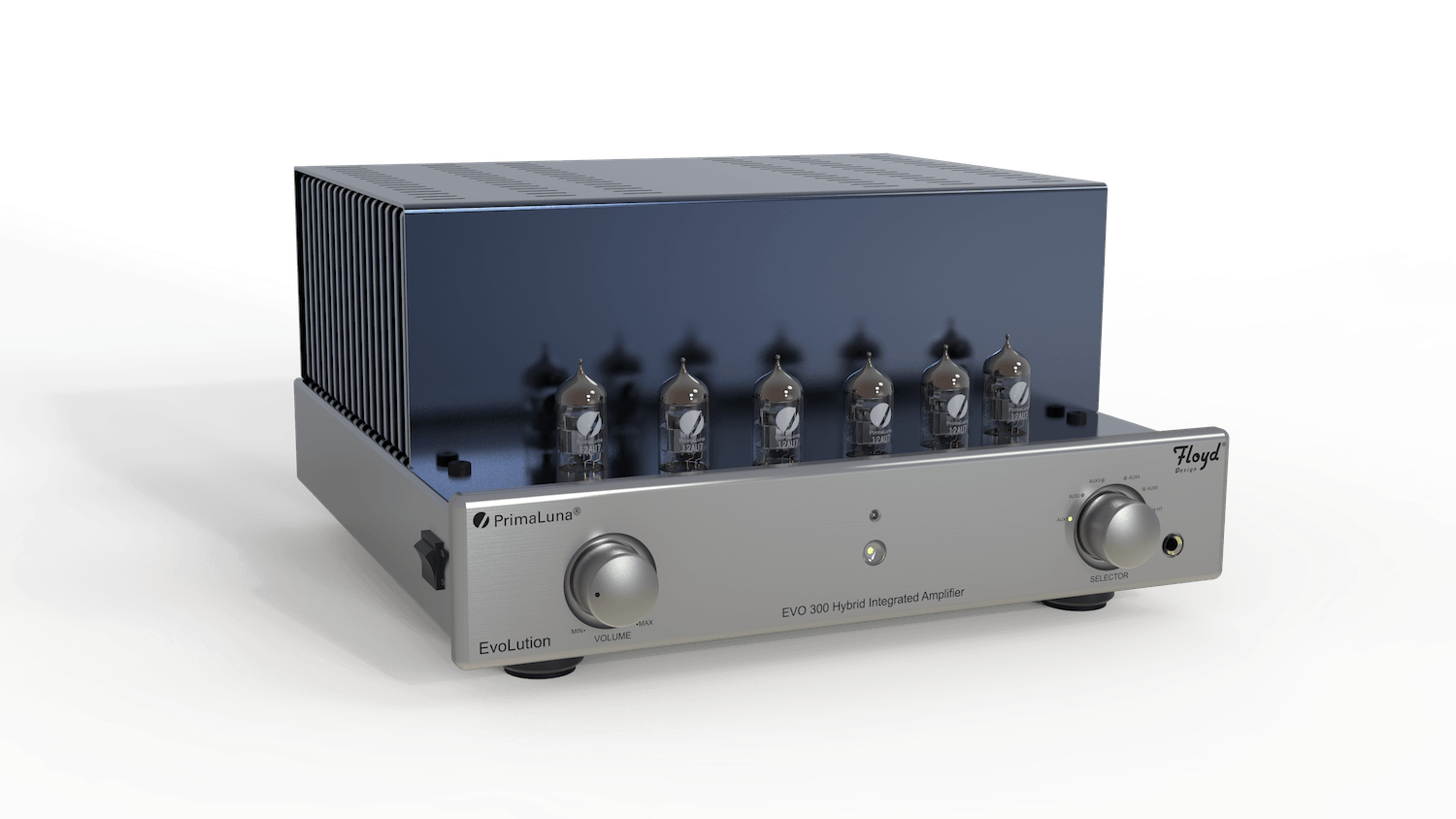
The Hybrid presents a convincing sound stage in which no part of the frequency range is boosted or attenuated. All tones are evenly present from the lowest note up, so evenly that high notes take on a silky character without losing anything of their bite or speed. The midrange is spread wide open, separating itself from the loudspeakers to be complete, even at a very moderate volume level. In the homogeneous stereo image, players remain sufficiently separated from each other to enable me to follow them as individuals. Meanwhile, the unity in the sound stage remains present while sound patterns mix naturally. My speakers, chosen because they reach out to the listeners soul rather than representing a technical tour de force, feel right at home coupled with the Hybrid. A recent update to my DAC is highlighted in full: detail, image, stage. The Hybrid doesn't hide details, nor does it turn them into circus acts. It creates music. It creates a listening experience that will last for hours.
What also captivates excessively is the "Orchestral Suite No.2", composed by Johan Sebastian Bach, performed by I Barocchristi and conducted by Diego Fasolis. A high-resolution download stuffed with the orchestras playing pleasure. Wind instruments are supported by strings, creating a sound stage placed masterfully around and between the installed loudspeakers—music reproduction without apparent anomalies suggesting that the mix was significantly modified in the studio. The arrangement of the orchestra as presented by the Hybrid exudes naturalness, bringing forward the acoustics of the hall without being too overwhelming. Created is an intimate stereo image with carefully preserved elements, taking the music to more exciting levels than bombastic reproduction ever could. Music is reproduced playfully and vividly. No edges, no trace of distortion that is so often wrongly attributed to tubes, nor a bare dryness like many modern transistor amplifiers bring on. Resulting in an organic reproduction, dynamic, controlled, yet without imposed pandoor or coercion by the Hybrid.

The combination of acoustics, loudspeakers, and amplifier causes a little more trouble with Lavina Meijer, playing on het harp music composed by Einaudi. Without bringing a real harp into the house, it is impossible to determine where the sometimes almost resonant energy comes from in the chain. The harp sounds prominent in the room, and I need to turn down the volume time after time, that much energy is released. This is not a mini instrument played for study. This is a full-fledged and credible transfer of the power bundled in the strings. "Oltremare" and "Una Mattina" on the harp are wonderful as on a grand piano and flow into the room. The sound stage set to a realistic height, a large instrument that manages to keep its size, like a sound cloud in space.
Live concert
As described above, at least as much musical enjoyment is derived from a live recording of a concert Carla Bruni gave once at L'Olympia in Paris. Straightforward set-up, minimal editing during and after the recording to maintain an authentic live experience. No, she is not a singer who will take the world by storm with her simple songs and minimal accompaniment of her guitar and added piano. It's intimate and small. The Hybrid exactly knows how to translate that imagination into my listening space. A warm, sweet voice, French of course, so with slight hoarseness or the panting characterising many French singers. She is standing between the speakers properly, like a natural person, just a bit lower than human height because she is sitting on a stool. The audience claps enthusiastically between the tracks and is positioned all over in the large hall, wide and deep. It is a pleasure to shove the ladies voice on this system right into my ears.

Very different are the rousing sounds of Nynke Laverman, the Frisian singer who knows how to combine the Frisian language with Portuguese Fado patterns. Unfamiliar with the Frisian language, the lyrics are just as challenging to follow as Carla Bruni's French or Italian, but this does not bother me. I can enjoy Nynke's voice, a trumpet that takes my mind to Mexico. Guitar sounds like they come straight from the Spanish and Portuguese coasts, recorded together as a musical unity. Especially the cd "Sielesalt" is at least as interesting from a technical recording point of view as the work of Kari Bremnes. While some amplifiers or speakers tend to make the music loud and bare, this system does not add any warmth but manages to transmit the music covered in a blanket of love. It may be forgiving in this respect, but I don't miss anything that makes me wonder: "Hey amp, you're cheating and making things prettier than they should be". Whatever or however I play, soft, loud, medium volume, music is complete, pure and natural.
Wake me up for Scandinavian jazz, such as "Skagerrak" by the Tingvall Trio. Clear piano sound, soft percussion, playful bass on a beautiful recording. Although the piano is positioned far to the right and percussion is forced to the left in the first track, it does not diminish the pleasure of listening through the PrimaLuna EVO 300 Hybrid. There is a considerable amount of power in the amp. It has the speed to launch the high piano notes to me, while cymbals manage to rustle softly and metallically, a bass is allowed to complement harmoniously. No matter what I play, the Hybrid gets life into the music, stacked on an impressive foundation. Even when the piano, bass and percussion slide towards each other in subsequent tracks for a compact, oppressive reproduction. Not only with the Tingvall Trio, but it is also the same impression with all the music that has passed during the recent weeks. Even so with the TV sound of the Eurovision Song Contest. The Hybrid always proves to be an amplifier to rely on, a joy to listen to. A valuable addition to the PrimaLuna series because the EVO 300 Hybrid performs differently than 100% tubes. More presence in the low frequencies, less outspoken in the higher frequencies, very neutral and yet more capable of keeping a tough speaker in control than power tubes can do in general.
Proud of PrimaLuna - Proud of Floyd Design
Once again, the PrimaLuna EVO 300 Hybrid has to leave my premises. Back to total solid-state with my amplifiers. Now the Netherlands, the USA and the rest of the world are waiting for deliveries before any consumer may start dreaming of this unique and very Dutch concept. Although the production is outsourced to keep the price/quality ratio high, it remains an amplifier brand of Dutch origin. It is a design from the Netherlands, composed of Swiss, French, Japanese, English, American and Chinese components and based on years of experience with high-quality audio by Herman and Kevin, implemented by specialists worldwide. PrimaLuna made using tube amplifier popular again in the early 2000s. The brand proved that tubes could be operated trouble-free. Of course, the introduction of a hybrid product was to be expected. If only because not every modern loudspeaker combines with a power tube. By the way, it is not always the tube or output transformer that is to blame, more often the designer of the speakers. The EVO 300 Hybrid manages to unite the best of both worlds. The tube at the input for plentiful dynamics, large stereo image and smooth reproduction, the FET transistor at the output for grip, excellent output power and control. The MOSFETs match perfectly with the electron tubes because they share the same audible characteristic and technical attributes.

Packing and returning the EVO 300 Hybrid leaves a vacancy, just like the first time. It is, in my opinion, an excellent amplifier in a price range where competition is already challenging, though where manufacturers fear PrimaLuna. Reliability, service, price/quality, with this brand, it is all there. Listening to the EVO 300 Hybrid is a pleasure. Whether it is your taste in reproduction, no one can judge. It's not a tube amplifier anymore. It's a transistor amplifier, but one on steroids with its six 12AU7 tubes in the pre-stage. It's a real hybrid and not a fake circuit to add a brown layer and some extra distortion to the reproduction. We can be proud that the Dutch can perform this way on the global audio market, and PrimaLuna will undoubtedly continue its success with this Floyd Design EVO 300 Hybrid.
PrimaLuna EVO 300 Hybrid
€ 6.975 | silver or black front | primaluna.nl | moremusic.nl
Read our second review of the PrimaLuna EVO 300 here

